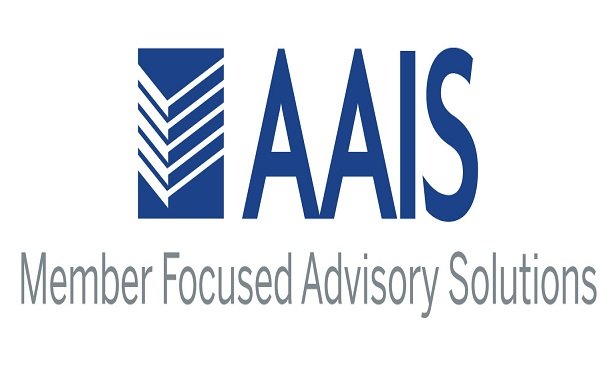The risk retention group industry is hailing a seminal SupremeCourt ruling Tuesday which held that self-insured group healthplans are entitled to enforce the terms of their plans aswritten.
|The court ruled unanimously in US Airways Inc. v.McCutchen that common principles of fairness and equity can'toverrule specific contract language written by sponsors of aself-insured health plan.
|However, four justices dissented on some procedural issues notcentral to the key issues in the case, says Bryan Davenport, anIndianapolis lawyer and specialist on subrogation issues, as wellas a member of the Self-Insured Institute of America.
|It is the fourth subrogation issue regarding ERISA plans thatthe court has dealt with in recent years, and provides the clearestguidelines on general issues regarding contract language in ERISAplans, as well as on enforcement issues.
|For example, it says that, in areas where the plan documents aresilent, as in the allocation of attorneys' fees, courts can stepin, according to officials of the Self-Insured Institute ofAmerica.
|The SIIA filed an amicus brief in the case, in partnership withthe National Association of Subrogation Professionals.
|The court also said that while “… equitable rules … cannot trumpa reimbursement provision, they still might aid in properlyconstruing it.”
|Because the US Airways plan was silent on the allocation ofattorneys' fees, “in those circumstances, the common-fund doctrineprovides the appropriate default,” the court said.
|As a result, US Airways can't require the victim of an accident,who is insured by the company's health plan, to reimburse that planfor the health care costs expended by the plan without also sharingin legal costs because the company's health plan didn't spell outhow to handle attorney fees in its plan document, the majorityruling said.
|SIIA officials said the case focused on whether plans canenforce the terms and conditions of their subrogation andreimbursement clauses as written.
|“We appreciate this court ruling because it clarifies theauthority of self-insured employers to administer their plan inaccordance with their plan documents,” said Michael Ferguson, SIIAchief operating officer. “It also clarifies an earlier decision inSereboff that left some issues unclear.”
|The case centered on a decision of the 3rd U.S. Circuit ofAppeals, based in Philadelphia.
|That court ruled in the case of the US Airways employee involvedin an auto accident that health plans would have to reduce theirinterests to account for the common fund doctrine (reducing theirright to reimbursement for attorneys' fees) and the made-whole rule(suspending their right to reimbursement unless and until the planmember recovered ample funds to cover all nonmedical damages) evenwhen the plan specifically exempted itself from the operation ofthese doctrines.
|“Or more simply put, can courts intervene to circumvent thelawful decisions of plan sponsors?” asked SIIA officials.
|Writing for the majority, Justice Elena Kagan held that plansare entitled to enforce their terms as written, commenting “…if theagreement governs, the agreement governs…”
|The case stemmed from a severe auto accident where the57-year-old respondent in the case won $100,000 from his insurancecompany and $10,000 from the driver who caused the accident.
|The victim paid $44,000 in attorney fees and ended up with$66,000. US Airways demanded that the victim pay it the $66,866 itspent on medical bills, regardless of how much of his damage awardwent to his attorneys.
|The victim argued that US Airways had a claim only on the partof the award covering medical expenses and couldn't touchcompensation for lost future earnings or pain and suffering.
|A district court judge held that the airline's health planspecifically allowed it to recover the full amount, but an appealscourt panel reversed that.
|The divided High Court supported the lower court decision thatthe victim's contract allows the airline to recover the money itspent on medical claims, even if that cuts into the future earningsand pain and suffering awards. But the justices overturned theruling that the airline wasn't liable for any of the victim'sattorney fees.
|“For US Airways, this meant that language asserting afirst-right to recovery, on any dollar recovered – regardless ofwhether it is for medical expenses – was binding,” said Ron E.Peck, senior vice president and general counsel of The Phia Group,Braintree, Mass., and SIIA member.
|As such, US Airways was not limited to recovering only fundsreceived by the employee for those expenses already paid by thebenefit plan, Peck said.
|“This, however, is where the good news ended for US Airways, andwhere we must all pay special attention,” Peck said.
|“The Court went on to say that while, “… equitable rules …cannot trump a reimbursement provision, they still might aid inproperly construing it,” he said.
|“The plan is silent on the allocation of attorney's fees, and inthose circumstances, the common-fund doctrine provides theappropriate default,” Peck said.
|“In other words, if US Airways wished to depart from thewell-established common-fund rule, it had to draft its contract tosay so – and here it did not.”
|Peck added, “By so saying, the Supreme Court has reinforced apre-existing concept that Court created rules such as those raisedby the plaintiff in this case will come into play when and if theplan language itself is silent on the matter.”
Want to continue reading?
Become a Free PropertyCasualty360 Digital Reader
Your access to unlimited PropertyCasualty360 content isn’t changing.
Once you are an ALM digital member, you’ll receive:
- All PropertyCasualty360.com news coverage, best practices, and in-depth analysis.
- Educational webcasts, resources from industry leaders, and informative newsletters.
- Other award-winning websites including BenefitsPRO.com and ThinkAdvisor.com.
Already have an account? Sign In
© 2024 ALM Global, LLC, All Rights Reserved. Request academic re-use from www.copyright.com. All other uses, submit a request to [email protected]. For more information visit Asset & Logo Licensing.








